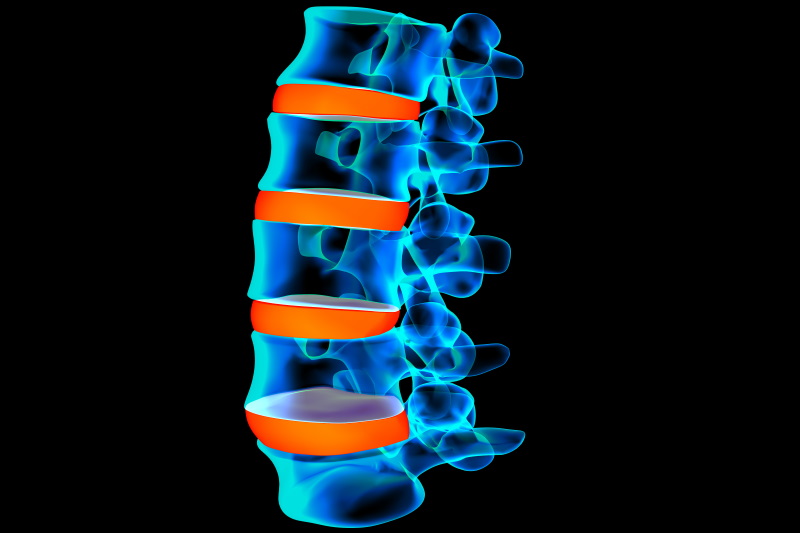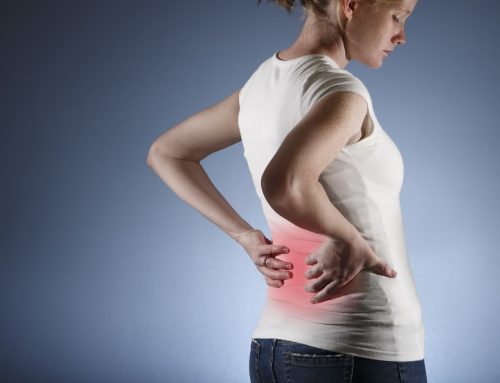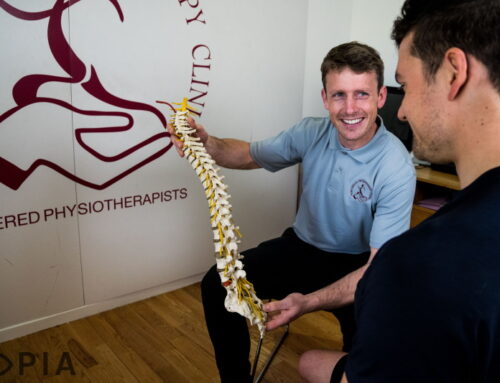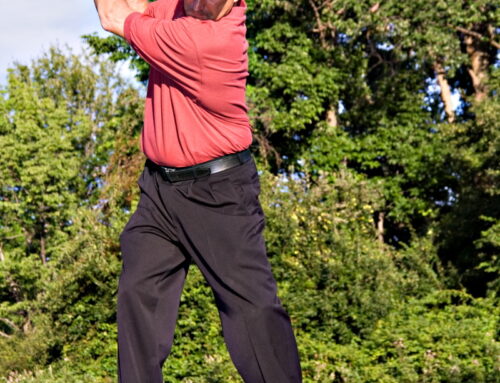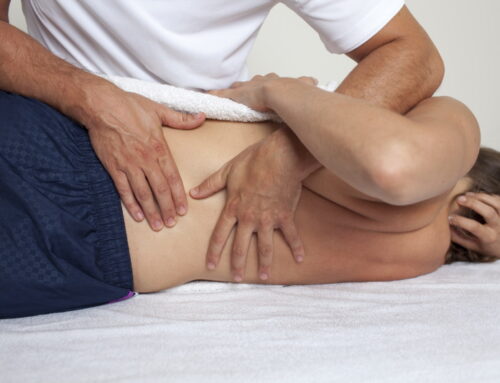Patients with disc- related lower back pain are usually very uncomfortable; frequently have sleep disorders and sometimes even depression as a result of their pain.
Pain management techniques vary from medication to bed rest; physiotherapy to spinal surgery – but one of the most effective and non-invasive ways to address disc related lower back pain is traction, available at Portobello Physiotherapy Clinic.
Traction has come a long way from weights being hung from people lying on a trolley (yes; they used to do that). These days modern physiotherapy clinics like Portobello have specialised electronic tables to apply safe, controllable traction to patients.
Traction will help effectively treat lower back pain resulting from herniated or deteriorated discs. It can relieve the pain associated with degenerative disc disease, sciatica (irritation of the sciatic nerve down through the buttocks and backs of the legs) and help people who have had back surgery but are experiencing pain.
What happens to the discs in the lower back?
The spine is made up of a series of connected bones called “vertebrae”, and the discs between them are strong connective tissues which hold one vertebra to the next, acting likes a cushion or shock absorber between them.
The disc is made of a tough outer layer called the “annulus fibrosis” and a gel-like centre called the “nucleus pulposus.” When they are moist and healthy and young, these disc cushion the vertebrae and facilitate normal bending and turning.
However, as we age the disc begin to break down; to degenerate, and to dry out. Also, if you suffer an injury the centre of the disc may begin to lose moisture which makes it far less effective as a cushion.
This may cause a displacement of the disc’s centre (called a herniated or ruptured disc) where the interior of the disc starts to protrude out through a crack in the outer layer. A herniated or bulging lumbar disc will press on the nerves in the spine and may cause pain, numbness, tingling or weakness of the leg.
Spinal discs have quite a poor blood supply and rely on the circulation of joint fluids to bring in nutrients and expel waste. If this is impaired, the disc starts to get dry, like an old sponge, and lose its flexibility.
Traction helps by de-compressing the discs of lower back, taking the pressure off them.
How does Traction for lower back pain work?
Low back pain caused by degenerative disc disease is often best treated with a multi-pronged approach and a combination of therapies so the patient can get sufficient relief from pain and to be able to go about their daily lives.
So although there is no one magic cure, a multi-faceted approach will help tremendously, and Portobello Physiotherapy Clinic will work tirelessly to help relieve your pain. Allowing the spine to decompress can bring great relief – Portobello Physiotherapy Clinic have specialised electronic tables that allow safe treatment of disc related lower back pain.
The goal of spinal traction is to pull the vertebrae apart from each other, to create more room for nerves as they exit the spinal column and to help relieve pressure on the soft cartilage discs between the vertebrae.
The level of traction required will depend on the patient; at lower intensities it can be used to stretch small spinal muscles. The lower back area needs quite a lot of force to pull it, but the advent of electronic tables has made this a far easier task for physiotherapists.
Traction is usually applied either manually (where small forces are sufficient) or mechanically. This is where the electronic tables come into play. It can be applied in a sustained way, where the force of the ‘pull’ is kept up for a certain period of time, or it can be intermittent, where the force of the ‘pull’ is used on and off.
Every patient’s treatment will be customised to their particular issue; level of pain; tolerance and other factors.
What is the difference between Spinal Decompression treatment and Spinal Traction?
Traction is helpful at treating some of the conditions resulting from herniated or degenerated discs; Spinal Decompression is slightly different in that it actually creates a negative pressure or a vacuum inside the disc.
This in turn causes the disc to pull in the herniation or bulge, and the flow of blood and nutrients is encouraged again.
The most appropriate treatment for you will depend on your specific case- traction can lower the intradiscal pressure to a certain point; Spinal Decompression does so to a greater extent but not everyone will be a candidate- for instance, people with moderate to severe osteoporosis.
To book an appointment with Portobello Physiotherapy Clinic, just call 01 476 3330.


